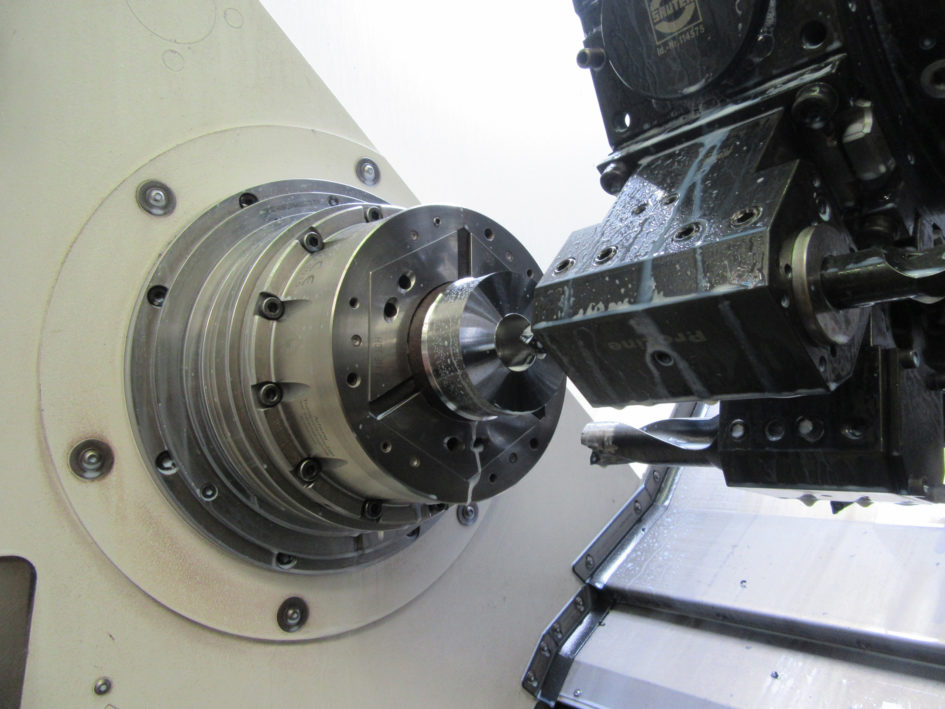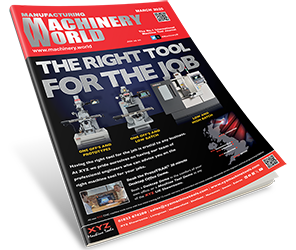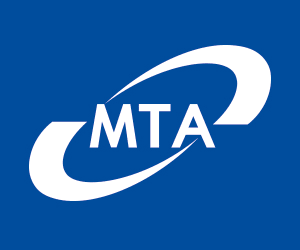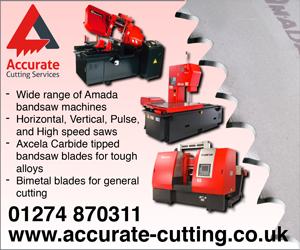When the KTR Group ordered new machine tools to reduce processing times, the power transmission specialist also opted for new workholding technology from Hainbuch to underpin this philosophy. The Rheine facility of the globally recognized manufacturer of drive technology, brake and coolant systems and hydraulic components was aiming to generate significant improvements in set-up times and the subsequent manufacturing process and this is where Hainbuch delivered for the 410 employee Rheine facility.
At an EMO exhibition, the company with 23 global subsidiaries wanted to get an overview of the machine tool industry and at this point, there had not been any previous contact with Hainbuch. However, at the exhibition, it quickly became clear that the right solutions could be sourced from Hainbuch. KTR and Hainbuch rapidly became close partners and had successfully optimised the manufacturing process in a step-by-step manner. The Hainbuch clamping devices had completely satisfied the requirements whilst offering additional advantages.
KTR is pursuing a course of growth and optimisation
The family-run German business supplies companies around the world in the railway and transport sectors, agricultural and construction machines, machine tools, automation and wind power industries and it imposes the most rigorous requirements on itself and on its suppliers. This particularly applies to the core business, couplings with diameters from 10mm to two meters. Close tolerances and outstanding concentricity properties are a necessity. Matthias Telker, Director of Production Management at KTR, is responsible for process optimisation at all manufacturing locations. Telker states: “To deliver permanent quality of premium products, as well as being successful internationally, constant improvements in all areas must be made.”
Off to new horizons
The stipulations within KTR were to reduce idle and set-up times in production to further optimise throughput time. Consequently, Günter Schleyer, Production Manager at KTR, was intensively involved with this topic. “Several machines were due to be replaced after reaching the limit of their service life. Therefore, we re-examined the clamping area. The important questions for us was how to position ourselves in the future and how do we increase flexibility? Among other things, we use machine tools for both series run and single-item production. Here we were at a crossroads. On one hand, we required a specialised series production solution and on the other hand, we needed a fast, flexible cell for the single parts.” His colleague, Production Manager Franz-Josef Reder, was assigned to deal with the new clamping system. In his research, Mr Reder encountered the clamping devices from Hainbuch.
KTR invited Hainbuch representative, Rudolf Meyer to the Rheine plant in North West Germany to check what clamping devices could fit with KTR products. However, to become thoroughly acquainted with the products and test their compatibility, the company opted for Hainbuch’s rental offer. “By the way, the rental was a great thing”, adds Telker. KTR received the Torok manual chuck with a base plate, a clamping head and a mandrel for the trial phase. For Telker, the overall time saving was extremely important. “We needed to know how the system performs under everyday conditions. We had questions like whether the Torok is rigid, and could it meet our practical requirements? Can we organise our set-up more efficiently with it? And of course the holding forces and repeatability were highly significant. This is where our manufacturing imposes very high requirements,” reports Schleyer and Reder.
“Practical experience had shown us that conventional jaws were out of the question. For our coupling manufacturing, parts are machined at high cutting speeds. Cams and bores are milled and drilled, so we have a wide variety of chip shapes that must not impair the function of the clamping devices. The clamping device should be practically self-cleaning. Needless to say, the implementation of the Torok manual chuck on one of the milling machines passed the test with flying colors. With these findings, the green light was given for working together with Hainbuch.”
Machines were changed over step-by-step
KTR ordered a clamping pallet with four Hydrok SE hydraulic stationary chucks along with clamping heads and mandrels for a new machining center. Schleyer explains: “The Hainbuch system is tailored for our products, particularly the flexibility of the clamping heads and mandrels. We use the clamping heads intensively but we always have special components that use mandrels. At the same time, right from the start we also planned to use the Hainbuch clamping system for the turning machines that we ordered. Therefore we use the TOPlus mini chuckand we now have a consistent system, whether for turning or milling. Now we can change within the modular system and therefore we are much more flexible.”
Thanks to the new turning machines and Hainbuch clamping products, some coupling series can be completely manufactured in a single set-up. Reder recalls: “Now we can bundle different machining steps together and reduce throughput times.”
Advantages as far as the eye can see
In summary, the KTR Group expenditure in Hainbuch equipment has more than paid off. The required qualities can now be achieved with more simple means. Re-clamping and intermediate measurements are unnecessary and set-up times have been significantly reduced. It was even possible to reduce set-up times for multi-machining operations whilst manufacturing processes are better synchronised. Moreover, the handling and reliability of the clamping devices have also shown impressive benefits at all implementation sites. Reder concludes: “Use of the Hainbuch clamping systems was a real step forward. Manufacturing has been simplified, tolerances are perfect and the shop floor has become leaner and more flexible.“







